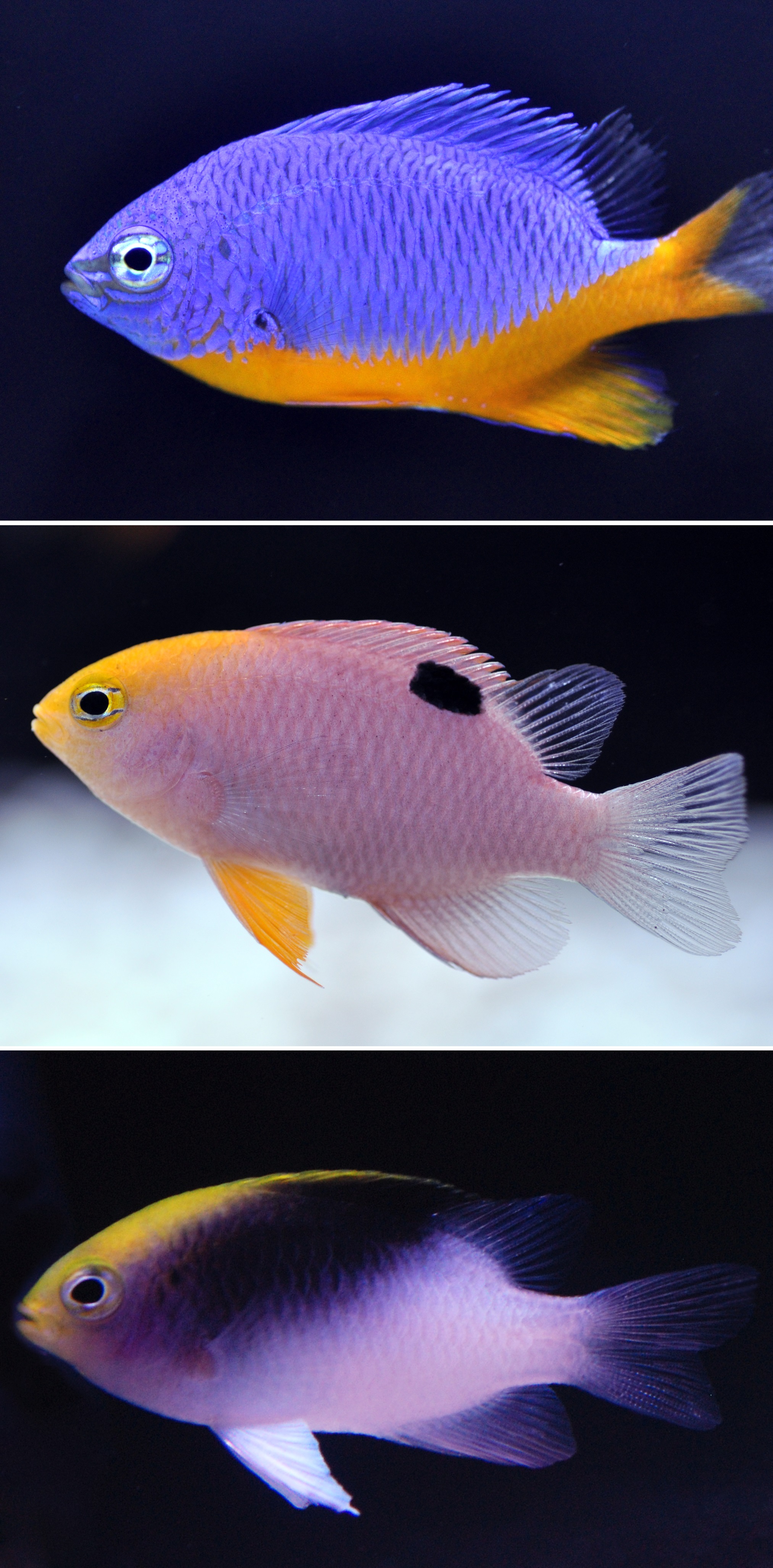Quality Marine Receives Aquacultured Damsels
Pet Age Staff //April 19, 2017//
On the heels of receiving the rare Anampses lennardi wrasse, Quality Marine has received three new aquacultured species of damsels for the first time. Damsels have long been considered a perfect fish for the beginner hobbyists for their hardiness, good looks and small aquariums size demands. They are found in abundance in the wild, however, sourcing aquacultured specimens can be a challenge. Quality Marine says its goal is to continually expand its aquacultured availability as it focus its efforts on initiatives that are the most environmentally significant. We are proud to add these damsels to our ever growing list of aquacultured species.
The azure damsel (Chrysiptera hemicyanea) has a large wild range; found from the Indo-West Pacific to the eastern Indian Ocean. They are a two-tone damsel of bright blue body with yellow anal and caudal fins. In the wild, adults can easily be found in lagoons and near shore reefs, which makes their collection less laborious and keeps travel time to a minimum, which has helped keep their prices down.
The talbot damsel (Chrysiptera talboti) has become very popular due to their unique coloration and small adult size. This species distribution ranges all over the Western Pacific and was recently recorded in Tonga. The talbot damsel’s body ranges from a pink color to a deep purple/blue color with a canary yellow head, which makes them stand out against other damsels. Adults are found in coral rich areas of reef slopes and lagoons.
The black cap damsel (Chrysiptera rollandi) ranges from the Eastern Indian Ocean to the Western Pacific Ocean and has recently been recorded in Tonga like the talbot damsel. Adults can be found singly or in small groups among coral in lagoons and outer reefs. This beautiful fish is yellow, black and white in coloration.
Species in the Chrysiptera genus are hardy, active, don’t hide much, don’t need much space and are generally very easy to care for, making them ideal for just about any aquarium with suitable tank mates. Like most damsels, Chrysiptera species can be territorial, so Quality Marine recommends keeping only one Chrysiptera genus damsel per aquarium (unless you have a large aquarium) unlike Dascyllus and Pomacentrus species, which can be added in small groups. For the hobbyist who is looking to add just one damselfish to their aquarium, these characteristics make this a great choice. Add live rock or other structures for them to hide in and create territories. They will readily take prepared diets, so for continued health provide a varied diet of frozen meaty foods, marine flake and pellets.



















